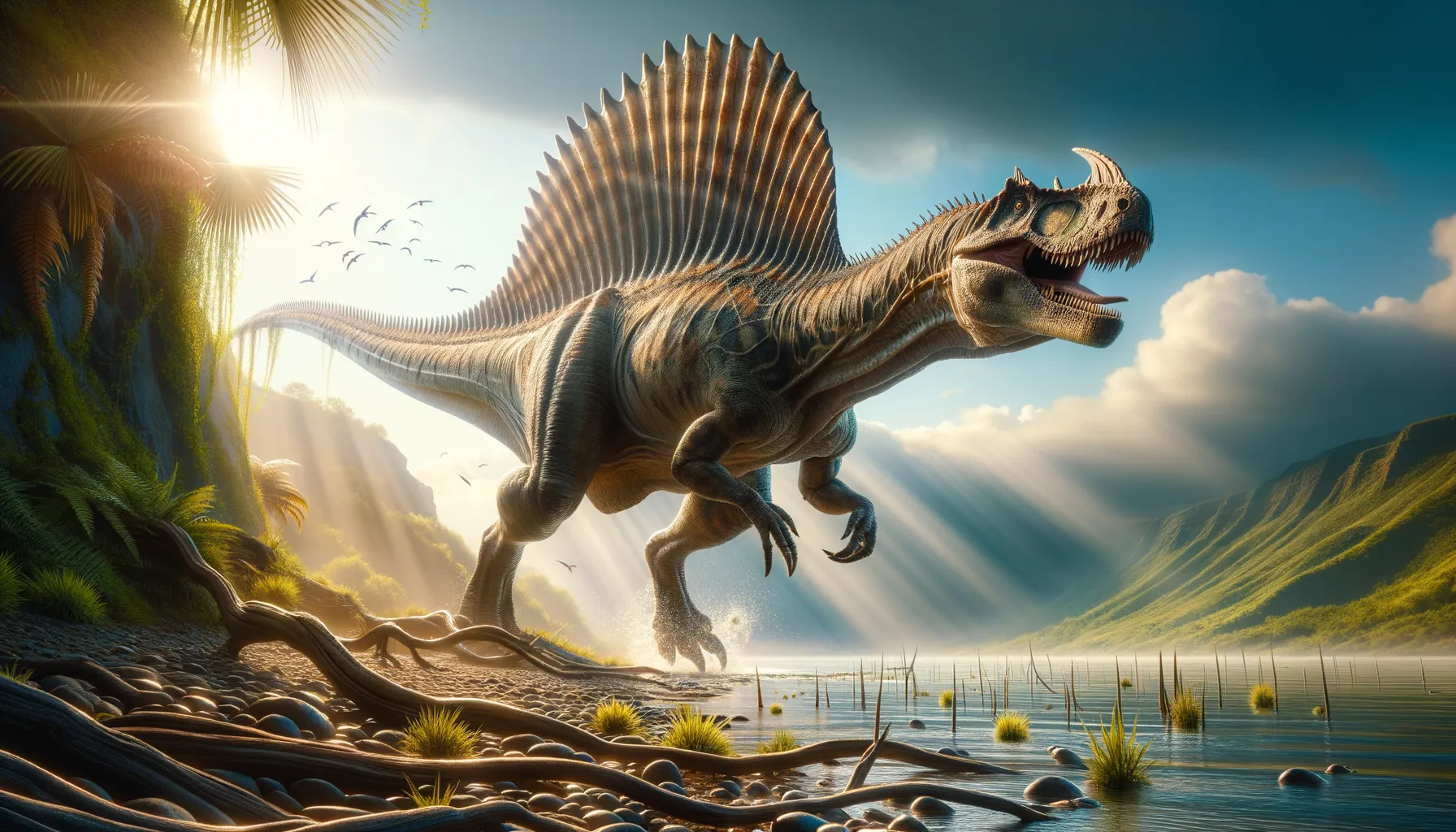
Spinosaurus
The sail-backed aquatic giant of the Cretaceous.
Period
Cretaceous
Length
Up to 18 meters long.
Height
Up to 5 meters at the hip.
Weight
Approximately 7 to 20 tonnes.
Spinosaurus was a unique and formidable predator that lived around 100 million years ago. Believed to be one of the largest carnivorous dinosaurs, it had a distinctive sail-like structure on its back and a crocodile-like elongated snout. Unlike many other theropods, Spinosaurus is thought to have been semi-aquatic, hunting for fish and other aquatic prey, making it an exceptional dinosaur both in its appearance and behavior.
Diet
Spinosaurus mainly fed on fish. Its diet included creatures like the massive prehistoric fish and possibly other smaller dinosaurs if opportunity arose.
Hunting
Spinosaurus is believed to have used its long, crocodile-like snout to catch fish. It likely hunted both in water and on land, displaying flexibility in its diet.
Environmental challenges
Spinosaurus faced challenges of living partly in water and partly on land, which required adaptability. Climate shifts would have affected water levels and fish availability. Competition for resources with other large predators could also have posed challenges.
Speed
Relatively slow due to its large size.
Lifespan
Estimated to be around 30 years.
First discovery
First discovered in Egypt in 1912.
Fun Facts
- Spinosaurus was one of the largest carnivorous dinosaurs, even bigger than the famous Tyrannosaurus rex.
- Unlike most theropods, Spinosaurus was adapted for a semi-aquatic lifestyle, making it one of the few swimming dinosaurs.
- Spinosaurus had a distinctive sail-like structure on its back, which might have been used for display or temperature regulation.
- It is believed Spinosaurus fed primarily on fish, thanks to its long snout and conical teeth that were ideal for catching slippery prey.
- The first fossils of Spinosaurus were discovered in Egypt in the early 20th century by German paleontologist Ernst Stromer.
- Spinosaurus lived during the Cretaceous period, around 100 to 93 million years ago.
- Despite its imposing size, much about Spinosaurus' appearance and behavior remains a mystery due to limited fossil evidence.
Growth and Development
Young Spinosaurus would have been more vulnerable, needing to grow rapidly to evade predators. They likely underwent significant morphological changes as they matured, particularly in developing their sail.
Habitat
Spinosaurus inhabited river systems and mangrove environments in what is now North Africa. These areas provided abundant fish and other marine life, which were critical to its semi-aquatic lifestyle.
Interaction with other species
It likely competed with large predatory dinosaurs like Carcharodontosaurus. Coexistence with other species might have involved territorial disputes primarily around water sources.
Natural lifespan
Spinosaurus could have lived up to 30 years in the wild.
Reproduction
Spinosaurus, like most theropods, likely laid eggs. Nesting habits remain speculative, but nests were probably built near water. Parental care levels are unknown, but some theropods displayed protective behavior towards their young.
Social behaviour
Little is known about its social behavior, but it may have been solitary or lived in small groups. Interaction might have been limited outside of mating periods or territorial disputes.
Fossil locations
Spinosaurus fossils have mainly been found in North Africa, particularly in regions like the Kem Kem Beds. The fragmentary nature of these fossils presents challenges in understanding its full anatomy and behavior.
